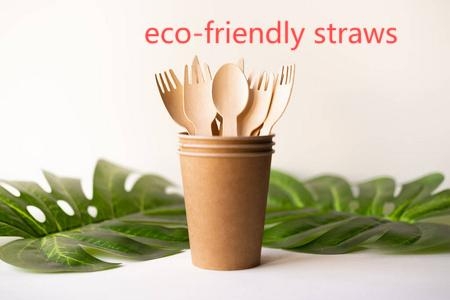The movement towards reducing plastic waste has gained global momentum, and eco-friendly straws have become one of the most visible symbols of this shift. With millions of plastic straws discarded every day, their environmental impact has prompted both consumers and businesses to search for alternatives that align with sustainable values. These straws are a simple yet effective way to minimize pollution while still offering convenience and functionality.
Eco-friendly straws are now produced in a wide array of materials that address both environmental and user needs. From biodegradable paper and compostable PLA to reusable metal, bamboo, and silicone, each option serves different preferences and occasions. Paper straws are ideal for short-term use and decompose quickly, while stainless steel and silicone straws offer a reusable, long-lasting option for people who prefer durability. This variety makes it easier for consumers to make eco-conscious choices without compromising their experience.
The growing awareness of plastic pollution in oceans has played a major role in increasing the demand for sustainable alternatives. Plastic straws often escape recycling systems and end up in waterways, posing a threat to marine life. Sea turtles, fish, and seabirds can mistake these small plastics for food, leading to injury or death. By switching to eco-friendly straws, we reduce this risk and contribute to healthier ecosystems. It's a small change, but when adopted at scale, it can lead to significant environmental improvements.
Beyond environmental concerns, businesses are recognizing that offering eco-friendly products appeals to modern consumers. Restaurants, coffee shops, and hotels are increasingly replacing plastic straws with compostable or reusable versions to demonstrate their commitment to sustainability. This not only enhances their brand image but also helps them comply with local regulations that ban or restrict single-use plastics. The result is a competitive advantage and a stronger relationship with environmentally conscious customers.
The production of eco-friendly straws is also evolving to be more responsible. Manufacturers are investing in cleaner processes that minimize emissions, conserve water, and utilize renewable energy sources. Some even go a step further by using recycled or rapidly renewable materials to ensure that the straws are sustainable from start to finish. These practices reflect a holistic approach to environmental stewardship, where the product is just one piece of a larger sustainability puzzle.
As global awareness continues to grow, innovations in straw design and material science are likely to further enhance the performance and eco-friendliness of these alternatives. Researchers are exploring bio-based materials that break down even faster in natural environments and developing coatings that improve the longevity of biodegradable straws. These advances will help solve common concerns like sogginess and durability, making eco-friendly straws more appealing to a broader audience.
The success of eco-friendly straws shows that even the smallest items in our daily lives can have a profound environmental impact. By replacing traditional plastic straws with sustainable options, we contribute to a global movement that prioritizes the health of our planet. These choices, repeated by millions of individuals, create a ripple effect that extends far beyond a single sip. They influence manufacturers, inspire policy changes, and encourage a culture of conscious consumption.To discover more about innovative and reliable eco-friendly straw solutions, visit sotonstraws.com .


